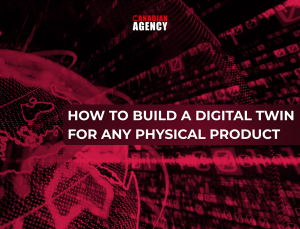Imagine buying a beautiful, handcrafted leather bag. You see a price tag and a “locally made” label, but the whole story—the source of the hide, the hours of skilled work, the journey to the shelf—remains hidden.
Now, imagine that same bag had a unique QR code. When you scan it with your phone, a world of information opens up. You see a video of the artisan at work, a map tracing the leather’s origin from a sustainable ranch, and a digital certificate of authenticity. This is the power of an inventive product, not magic.
For decades, the barcode has been the workhorse of commerce. It’s a simple, brilliant tool for identifying a product and its price at checkout. But it’s a one-way street. The barcode can’t tell a story, guarantee its origin, or interact with you. It’s a dead end.
The next generation of products is breaking this silence. They are becoming “smart,” not because they have computer chips inside them (though some might), but because they have a rich, dynamic digital life online. Digital twins are revolutionizing everything from supply chains to customer relationships.
The sophisticated, specialized software that makes it all come to life is at the center of this change, not the product tag.
What Exactly is a “Smart Product”?
An innovative product is a physical item—a bag of coffee, a piece of lumber, a car part—that has a unique digital identity. This identity, often accessed via a QR code, NFC chip, or RFID tag, is linked to its digital twin —a cloud-based replica that contains the product’s entire history and data.
Think of it as a passport for your product. A passport doesn’t just identify you; it contains stamps from every country you’ve visited, creating a verified record of your journey. An innovative product’s digital twin does the same.
This shift from a “dumb” barcode to a “smart” digital identity is powered by a sophisticated software stack that forward-thinking businesses are leveraging to gain a potent competitive edge.
The Four-Layer Software Stack That Makes It Possible
Making a QR code is only one aspect of developing an inventive product. It necessitates creating an intelligent, scalable, and safe digital infrastructure. The main software layers involved are broken down here.
Layer 1: The Bridge – Digital Identity and Capture
This is the only part of the system the user physically touches. It consists of:
- The Identifier: A unique QR code, NFC tag, or RFID chip attached to the product. This isn’t a generic code for all “Maple Syrup 500ml” bottles; it’s a unique serial number for that specific bottle.
- The Reader: Typically, a consumer’s smartphone or a dedicated industrial scanner. A simple scan is the handshake that connects the physical item to its digital twin.
The software challenge here is to reliably and securely generate, manage, and associate millions of unique identifiers with their physical counterparts.
Layer 2: The Foundation – The Data Pipeline and Cloud
When a code is scanned, it triggers a secure call to the cloud. This is where the digital twin lives. This layer involves:
- Cloud Infrastructure: Using platforms like AWS, Google Cloud, or Microsoft Azure to create a secure, always-available home for all product data.
- Data Ingestion: The system continuously collects data from various points throughout the product’s lifecycle. This could be a timestamp from a warehouse scanner, a temperature reading from a shipping container, or a quality check note from a factory floor.
- Data Storage: Organizing this influx of information into a coherent and accessible digital timeline for each product.
This foundation must be robust. It needs to handle thousands of simultaneous scans and store vast amounts of data without slowing down, ensuring a seamless experience for everyone in the chain.
Layer 3: The Trust Layer – Blockchain and Verification
For many industries, trust is everything. How can a buyer be sure the “organic quinoa” they’re purchasing is genuine?
Blockchain technology has the potential to revolutionise this situation. While not necessary for every innovative product, it’s a powerful tool for verification.
Think of a blockchain as a shared, unchangeable digital ledger. When a product is certified as organic, that certification can be recorded as a “block” on the chain. When it’s shipped, another block is added. This creates a tamper-proof record of its journey.
The software integration here is key. Your cloud system doesn’t store all the data on the blockchain (which can be slow and expensive), but instead stores a unique digital fingerprint—or “hash”—of critical events on the chain. Anyone can scan the product and verify this fingerprint against the public ledger, instantly confirming its authenticity. This is a game-changer for combating counterfeiting and proving ethical sourcing.
Layer 4: The Intelligence Layer – AI and Applications
Data alone isn’t valid. Insight is. This top layer is where data becomes value, powered by Artificial Intelligence (AI) and user-friendly applications.
- AI and Machine Learning (ML): The software can analyze the data from thousands of products to find patterns. Is there a specific shipping route where temperature fluctuations consistently occur? Is a particular batch showing a higher rate of quality control failures? AI can spot these trends and alert you before they become significant problems.
- Business Applications: This is the dashboard where a company can see the real-time status of all its products in the field. It provides end-to-end supply chain visibility, from raw material to the end consumer.
- Consumer Applications: When the end user scans the code, they are presented with this captivating interface. By providing a warranty registration page, recycling guidelines, a brand story, or customised content, it can transform a one-time purchase into a continuing partnership.
Real-World Use Cases Transforming Industries
This technology isn’t a distant future concept. It’s providing tangible solutions for global industries today.
- For Agriculture and Agri-food: A pulse crop farmer can use smart tags on bulk containers. A buyer overseas can scan a code to verify the farm’s sustainable practices, protein content, and the exact date the crop was harvested, justifying a premium price and building unparalleled trust.
- For Manufacturing and Logistics: An auto parts manufacturer can track every component. If a defect is later found, they may use the digital twin to quickly identify all affected vehicles for a highly targeted, cost-effective recall, saving millions of dollars and safeguarding their brand.
- For Retail and Apparel: An outdoor apparel brand can embed NFC tags in its jackets. In addition to confirming the jacket’s legitimacy, a purchaser can scan the tag to view a movie on its weather-resistant features or locate a map of nearby hiking routes. As a result, a straightforward transaction becomes an unforgettable brand experience.
The Future is Phygital
The line between the physical and digital worlds is blurring. The businesses that will thrive are those that see their products not as static objects, but as dynamic touchpoints for engagement, trust, and value.
The humble barcode had a great run. But the future belongs to innovative products—products with a story to tell, a past to verify, and a future relationship to build with the customer. This future is built not on hardware, but on sophisticated, custom software that brings the physical product to life.




